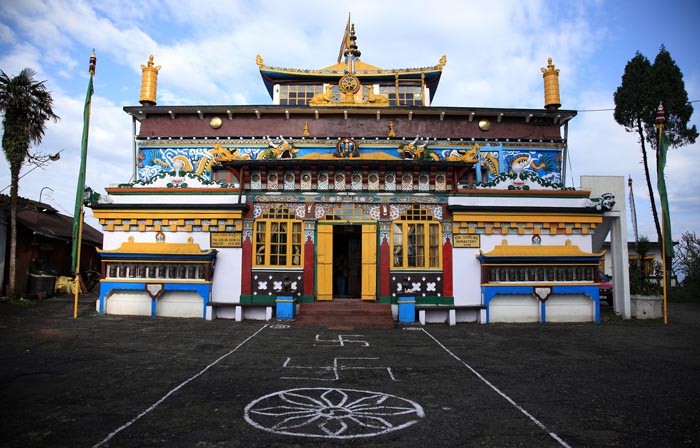Aloobari Gompa Monastery

Detail of Aloobari Gompa Monastery (Darjeeling, West Bengal) History & Architecture
The Mag Dhog Yolmowa Monastery, more popularly known as the Aloobari Monastery is a famous monastery located in the Aloobari locality of Darjeeling town. It was built under the supervision of Sri Sangay Lama who is a highly revered religious head of the Yolmowa and comes from a small ethnic group hailing from north east of Nepal. He later settled in Darjeeling. The construction of monastery started in the year 1914 the same year when World War I started. This monastery was dedicated to world peace and was meant to ward off the war, the name Mag Dhog means the same, 'warding off the war'.
This monastery is located a little over 2 kms from the main town of Darjeeling. If you are coming from the town then you need to take the Tenzing Norgay Road and in case you are coming from Ghoom or Jore Bunglow you can take the narrow Aloo Bari road from there.
Aloobari Gompa Monastery Mythology & History
According to popular belief this monastery was built during the World War I to avoid the war and bring world peace. Anticipating the destruction that word war would bring, the founder of this monastery constructed this monastry hoping to spread the message of word peace. Today the condition of this monastery is pitiable and is almost in ruins. It needs immediate attention to bring it back to its original glory. Inspite of this the religious and mythological significance of this monastery still remains intact.
Aloobari Gompa Monastery Religious Significance
This monastery was built was Sangay Lama who was the religious head of a particular tribe called the Yolmos. They are listed as Scheduled Tribes and are Buddhists by religion. This monastery caters to the religious need of the Yolmos. They are simple tribal people who follow most of the Buddhist religious practice and there isn't anything special or different about their religious practice compared to other sects of Buddhist. This monastery is open to visitors of all caste, creed or religion and there is no restrictions to anybody. Anyone can visit it and offer their prayers in this monastery.
Aloobari Gompa Monastery Architectural Significance
The monastery has a large open space at the centre and it is the first thing that will greet you when you enter. The striking features from outside are its bright red and yellow walls. There is also a concrete model of two lions on top of the gate as well as in front of the main building. Like any other monastery this is also built in the Tibeto Buddhist architecture and the walls of this monastery are also painted with beautiful and colourful paintings that depict the life and story of Buddha. Inside the monastery there are several statues of Lord Buddha along with an excellent model of Padmasambhava, the sage who was actively involved during the 8th century in spreading Buddhism in Tibet and Bhutan. He is also known as Guru Rinpoche. The monastery also has a very valuable collection of old manuscripts on Buddhism which are centuries old.
Festivals at Aloobari Gompa Monastery
This oldest monastery in Darjeeling celebrates almost all the festival that comes in the Tibetan calander. From loshar to the Tibetan New Year or Buddha Purnima or Buddha Jyanthi, Aaloo Bari Monastery is well prepared to celebrate these festivals in cultural and religious way. During this festival season, Monastery is well decorated with Tibetan flavour adorned with beautiful Tibetan art that depicts the glory of the Tibetan culture and the religious celebration.